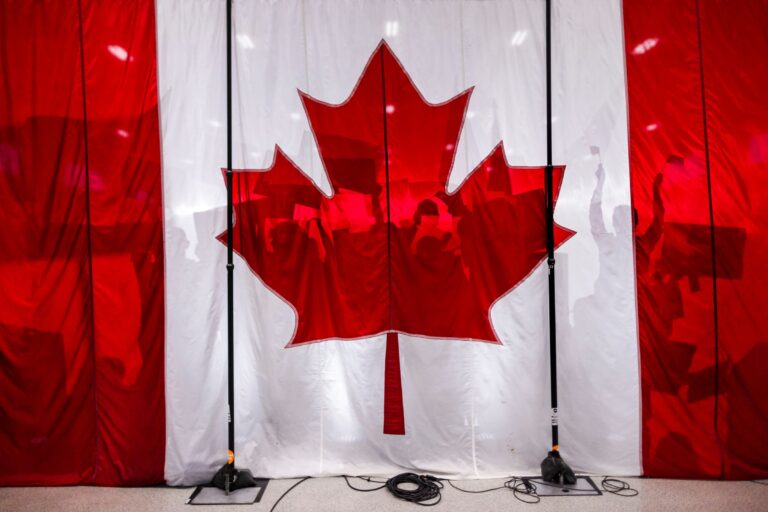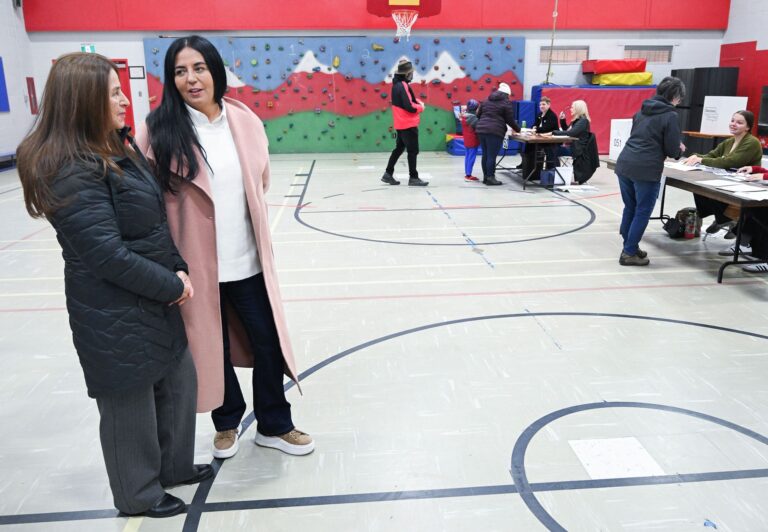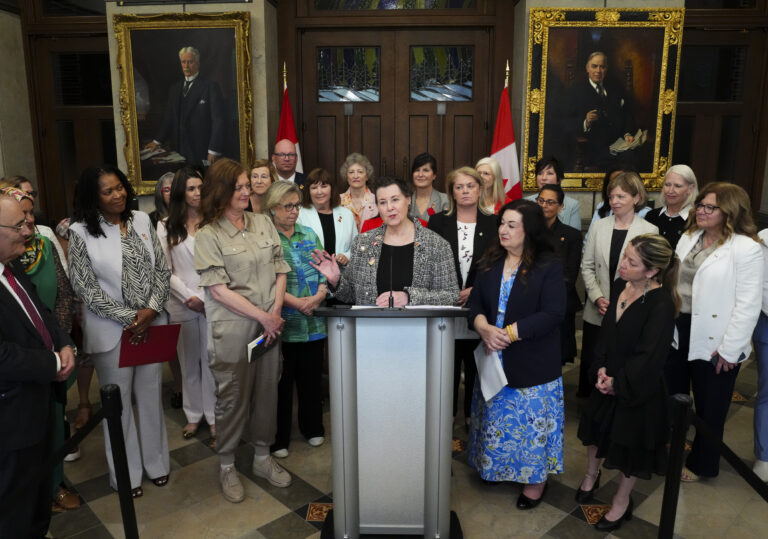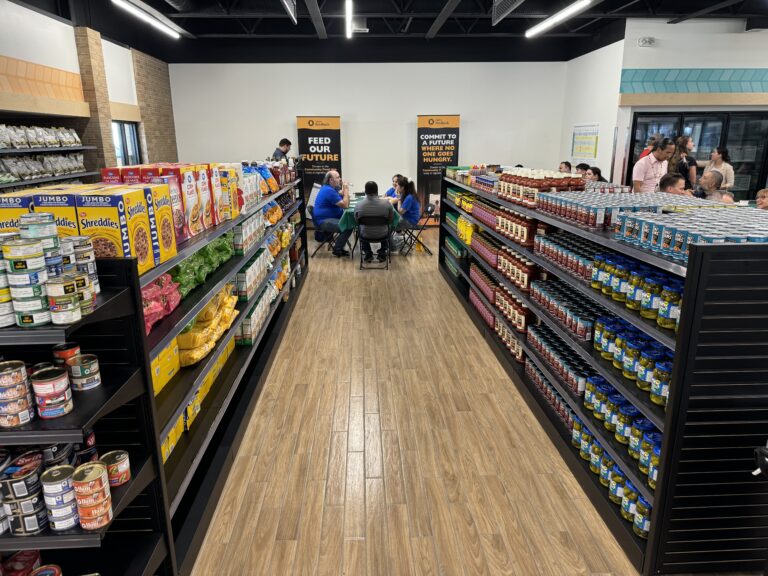The next federal election is a year away, and our policy conversations are starting to shift with the campaign in mind. Renewing the nation-to-nation relationship with Indigenous peoples was one of Prime Minister Justin Trudeau’s flagship priorities as he entered his first mandate. But while expectations among Indigenous peoples have been high, progress has been frustratingly slow. Indigenous leaders and scholars have cried foul on both process and substance. Though lands and jurisdiction are key issues, there has been no recognizable dialogue between the federal, provincial and territorial governments and Indigenous leaders on what is to come.
It’s a good time to ask, What does the federal government’s reconciliation and nation-to-nation agenda really mean? Are these objectives still relevant? And, if so, what can the government do to effectively engage and sustain the country’s support, and that of Indigenous peoples especially, with a federal election around the corner?
The nation-to-nation agenda
There remain two key reference points for understanding the nation-to-nation agenda’s underlying objectives. The first is the Prime Minister’s mandate letters to his ministers. The second reference point is the Principles respecting the Government of Canada’s Relationship with Indigenous Peoples, made public by Minister of Justice Jody Wilson-Raybould in July 2017. Some Indigenous people have criticized the government for failing to consult on the development of the Principles.
In the mandate letters, the Prime Minister calls for a renewed nation-to-nation relationship with Indigenous peoples “based on recognition of rights, respect, co-operation, and partnership.” More recently, Trudeau said that recognition is necessary so that we can “get to a place where Indigenous peoples in Canada are in control of their own destiny, making their own decisions about their future.”
The Principles offer two core rationales for the government’s agenda. The first is a human rights view informed by the United Nations Declaration on the Rights of Indigenous Peoples. It says Canada’s democratic values of inclusion, respect and diversity call for a clean break from our colonialist past. Some call this the “moral” challenge that lies at the heart of the constitutional protection of Indigenous rights.
The second rationale reflects an economic view, where Indigenous peoples are making their own decisions and in control of their own destiny. The Principles speak of an end to marginalization. Indigenous Canadians are not meeting their potential for engaging in Canada’s economy or are being disenfranchised from it. This has negative effects on Indigenous communities who, in many cases, live in persistent conditions of poverty. These effects also have consequences for the country. Two recent studies, by the National Aboriginal Economic Development Board in November 2016 and the Centre for the Study of Living Standards in October 2017, indicate that improving participation rates in the labour market would grow Canada’s economy between approximately $28 billion and $36 billion by 2031. This amounts to a potential $8-billion “dividend” in lower costs related to poverty, health care and other needs.
At its core, “nationhood” requires three things: a community’s ownership of its own identity; control over its own social, political and economic institutions; and control over its own lands and resources. Without these, the institutions that govern from the outside do not enjoy legitimacy or community confidence. Equally important, the community lacks the ability to generate its own wealth. Lack of control, mistrust and economic dependency combine to produce negative incentives and disincentives that drive ineffectual societal outcomes.
Current discussions on reconciliation and the nation-to-nation agenda
If you take the Prime Minister at his word, the government’s vision is founded on the belief that Indigenous rights do not derive from the Constitution. Rather, these rights are recognized and affirmed by it. They already exist. Jurisdiction in Indigenous nations is, therefore, not delegated (or delegable) under the Constitution.
This is not simply a policy position. It must be seen as a reasoned, justifiable and strategic stance with two broad implications. First, under this view, Indigenous peoples would no longer have to focus their energies on negotiating or litigating their rights to self-determination and self-government. They would instead focus on nation-rebuilding tasks such as restoring governance to manage their own policy and political priorities, and establishing relationship mechanisms with other orders of government to regain control over social and economic programs, lands and appropriate funding mechanisms.
The second implication is that the federal government would focus on supporting Indigenous nations in their nation-rebuilding initiatives in a way that can enable Indigenous governments and the federal, provincial and territorial governments to work as partners within Canada’s constitutional framework. The government’s Principles indicate that it is the mutual responsibility of all governments to “shift their relationships and arrangements with Indigenous peoples so that they are based on recognition and respect for the right to self-determination, including the inherent right of self-government for Indigenous nations.”
This calls for a significant and highly disruptive transformation in power-sharing and governance, requiring critical shifts in thinking. But the lack of conversation around these foundational ideas, together with the release of the government’s proposed Recognition and Implementation of Rights Framework, announced by the Prime Minister in February 2018, has many Indigenous leaders and scholars questioning the government’s commitment to the recognition of rights. They say the high expectations set in public statements are not met. They argue the process has moved too quickly and without sufficient Indigenous consultation and engagement. They point out that the core issue of land is not dealt with and jurisdiction is discussed only in very limited terms; and they say the government’s relative silence on these fundamental issues means that the fiscal relationship and federal, provincial and territorial relationships are getting little or no attention.
In the case of First Nations, the government is seen by critics as focusing efforts on “prepar[ing] bands not for self-determination but for compliance with the self-government policy: a reserve-based jurisdiction that does not expand the decision-making powers or authority of First Nations to exercise economic rights over their broader traditional territories.” In its recent special report, Ryerson University’s Yellowhead Institute goes so far as to say the rights framework “expresses a coherent set of goals, which are to suppress Indigenous self-determination with Canadian Confederation.” Many, including Assembly of First Nations (AFN) National Chief Perry Bellegarde, are asking for a reset of the whole process.
But among Indigenous leaders are many who, despite their disappointment in the Rights Framework, are committed to working with the Trudeau government. At a recent forum on the Framework hosted by the AFN, Bellegarde said, “To the Crown…we are not saying ‘no,’ we are saying it’s got to be First Nations-driven and people have to understand…because right now there is not a good feeling.” Crown-Indigenous Affairs Minister Carolyn Bennett’s response to the deep concerns expressed has been “We want to get this right, and with your help, I know we can.”
As imperfect as the process and dialogue may be, the goals the government and Indigenous leaders share around a renewed nation-to-nation relationship are worth the effort. To say otherwise is to say the status quo is acceptable in this country. On any reasonable view of our democratic values, our longer-term economic interests as a country or our international commitments and our place in the world, it is not.
Maintaining momentum for this long-term project
Ongoing uncertainty regarding trade with the United States has recently monopolized the attention of the federal cabinet. In addition, the natural resource sector has become less reliable as a source of economic stability and growth, given the divisive debates and disagreements related to building pipelines. Such factors, among others, mean that governments will be distracted by national economic and politicized discussions. Budgets will be tighter at a time when much investment is needed to close the socio-economic gap between Indigenous and non-Indigenous Canadians. New governance structures and arrangements must also be considered to support the nation-to-nation relationship.
Momentum may be waning and, ultimately, federal, provincial and territorial governments may feel less pressure to be open to the sharing of Canada’s land and resource wealth that will be needed to support local Indigenous nations and their economies.
If the dialogue between Canada and key players, Indigenous and non-Indigenous, is not strengthened, if core issues such as land, jurisdiction and related fiscal issues are not addressed, and if funding to meet existing program pressures is not predictable, Indigenous peoples will likely grow more frustrated and confidence in governments will erode further. Expectations are currently high in this latest push to engage Indigenous peoples, and if something is not accomplished it will be very difficult to re-engage on these issues for some time. In addition, regardless of improved efforts on these fronts with Indigenous communities, unless non-Indigenous Canadians are more effectively engaged, they may find it difficult to remain committed to the relationship.
Maclean’s recently published the results of an Angus Reid poll taken in March 2018 that suggested that only 34 percent of Canadians support the view that Indigenous communities should be moving toward more autonomy and control over their own affairs rather than being governed by the same systems and rules as other Canadians. And the Canadians polled slightly favoured the view that Indigenous people should not have special status that other Canadians do not enjoy, and that they should more fully integrate into the broader Canadian society. Even if those numbers are improvements over the past, it is doubtful and contestable whether they are sufficient to support the kind and magnitude of transformational change the nation-to-nation agenda requires of the country.
Progress depends on engagement
The Indigenous communities that are at the core of Indigenous socio-political relationships must themselves carry the main work of nation rebuilding. But levels of local readiness, models of nationhood and relationship dynamics between and among key players, including those with the federal, provincial and territorial governments, differ. The government’s recent commitment of funds to support nation rebuilding is welcome but modest, and the government has yet to tackle the issues that prevent Indigenous communities from generating their own sources of income to fund their nation-rebuilding efforts. The journey is uneven and challenging and will continue to be for some time, which may also contribute to waning confidence on the part of Indigenous peoples.
It took decades to create these challenges, and it will take much time to repair their effects. It is clear the federal, provincial and territorial governments need a practical strategy to deliver on their promises and build support among citizens critical to maintaining such a complex undertaking. The Truth and Reconciliation Commission raised Canadians’ consciousness, and governments, educational institutions and other actors across the country are taking its calls to action seriously. However, the broader effects of these collective efforts will take time to emerge, meaning they are unlikely to be of much help bolstering public support in the short and medium terms.
At this point in the conversation, many Canadians do not fully understand what reconciliation and the nation-to-nation relationship mean for them, their communities or the country. The Trudeau government has provided the policy direction, but it is now time to fully engage Canadians and Indigenous communities and bring them into the conversation.
What is required is a good faith response to fair complaints from Indigenous partners about the government’s nation-to-nation agenda. Any engagement strategy moving forward must demonstrate transparency and openness; it needs to engage all relevant players, including the provinces and territories; and it needs to be founded on an honest and frank discussion of long-, medium- and short-term objectives. Terms such as “nationhood” need to be unpacked in an effort to get to shared understanding and commitment.
And the federal government needs to be clear on its own role, which is to create the conditions for supporting local conversations and efforts. What is missing is a truly national conversation where all Canadians understand the issues and questions but, more important, the complexity of our relationship with Indigenous peoples. At the moment, these conversations are taking place behind closed doors in governmental offices.
The first step is to open the doors and allow other voices to enter these insider conversations. This requires a shift in how government approaches policy in this area, and it is not an insignificant endeavour. It means government has to let go of some of its control, and that alone will be a major step forward to create the conditions of trust needed to get something tangible done.
The authors wish to acknowledge support for their research from the Social Sciences and Humanities Research Council of Canada.
Photo: People fill the street outside Canada Place during Canada Day celebrations in Vancouver, B.C., on July 1, 2017. THE CANADIAN PRESS/Darryl Dyck
Do you have something to say about the article you just read? Be part of the Policy Options discussion, and send in your own submission. Here is a link on how to do it. | Souhaitez-vous réagir à cet article ? Joignez-vous aux débats d’Options politiques et soumettez-nous votre texte en suivant ces directives.












